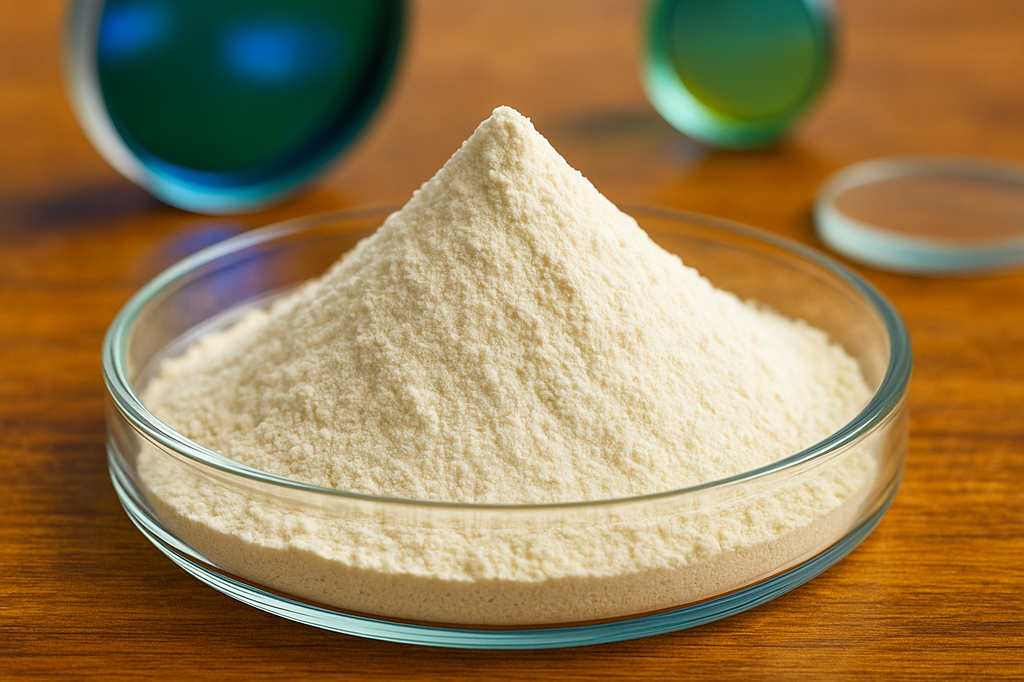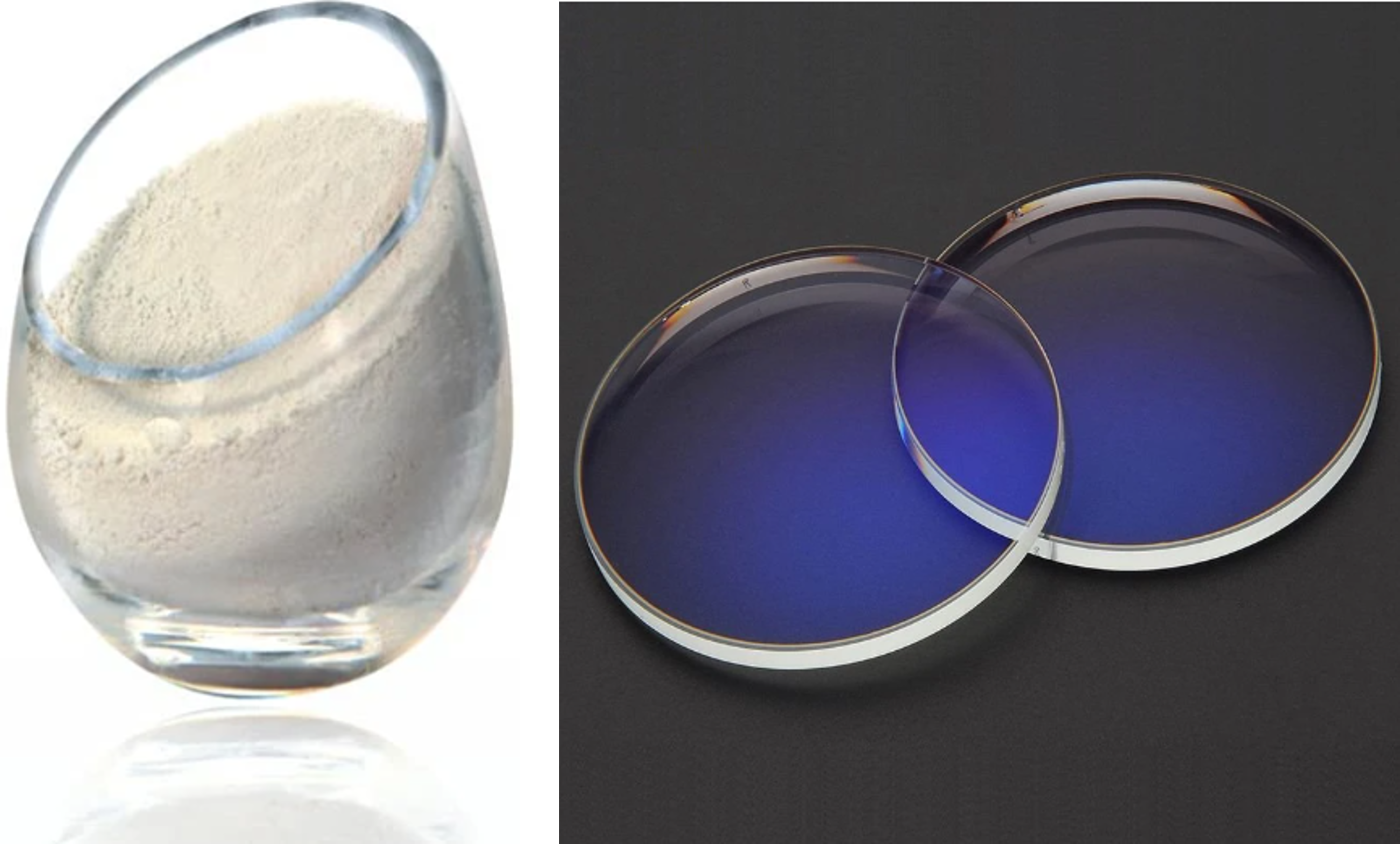High-purity cerium oxide polishing and its applications in the field of photonics is the subject of this blog article.

Introduction
In the fast-evolving world of photonics, precision optics plays a pivotal role in enabling technologies ranging from advanced laser systems to high-resolution imaging and next-generation display technologies. Achieving flawless optical surfaces is not merely a matter of aesthetic appeal – it directly impacts optical performance, efficiency, and longevity. One material has stood out as the industry standard for fine polishing of optical components: high-purity cerium oxide (CeO₂) polishing powder. Its unique chemical and physical properties make it indispensable for precision optics manufacturing, and its role continues to expand as photonics technology advances.
This article explores the properties, applications, and advantages of high-purity cerium oxide polishing powders, providing insights into how they are enabling next-generation photonics solutions.
What is Cerium Oxide Polishing Powder?
Cerium oxide, also known as ceria, is a rare earth oxide widely used as a polishing agent for glass, crystals, and optical materials. Unlike traditional abrasives such as aluminum oxide or silicon carbide, cerium oxide combines both chemical and mechanical polishing actions. This dual-action approach ensures a smoother, defect-free surface, making it ideal for precision optics manufacturing.
High-purity cerium oxide powders are produced with minimal impurities, typically exceeding 99.5% purity. This purity is critical for sensitive optical applications, as even trace contaminants can introduce scratches, pits, or optical aberrations.

High-purity cerium oxide for precision optics manufacturing. Courtesy of Hunan Haozhi Group.
Key properties of cerium oxide polishing powder:
High chemical reactivity: Enables effective removal of surface defects and micro-scratches without excessive mechanical abrasion.
Uniform particle size distribution: Ensures consistent polishing performance and surface finish.
Compatibility with diverse optical materials: Works on fused silica, BK7, optical crystals, and other specialty glasses.
Environmentally stable: Non-toxic and safe for industrial use under controlled conditions.
How Cerium Oxide Polishing Works
Cerium oxide polishing operates on the principle of chemical-mechanical polishing (CMP). During the polishing process, cerium oxide particles interact with the glass or crystal surface, forming a temporary chemical bond. This reaction softens the surface at a microscopic level, allowing gentle removal of material through mechanical action.
Key Steps in Cerium Oxide Polishing:
Preparation of the Slurry: High-purity cerium oxide powder is mixed with deionized water to form a slurry. The concentration, pH, and particle size are carefully controlled for optimal performance.
Surface Polishing: The optical component is placed on a polishing pad or lap, and the slurry is applied. The combined chemical reaction and mechanical friction gradually remove surface irregularities.
Rinsing and Cleaning: After polishing, components are rinsed thoroughly to remove residual cerium oxide particles. Ultrasonic cleaning is often employed to ensure no debris remains.
Quality Inspection: The polished surface is inspected using interferometry, surface profilometry, or microscopy to verify surface roughness, flatness, and optical quality.
This controlled process yields optical surfaces with nanometer-level smoothness, essential for high-precision photonics applications.
Applications of High-Purity Cerium Oxide in Precision Optics
High-purity cerium oxide polishing powders are indispensable in the fabrication of a wide variety of optical components:
1. Laser Optics
Laser systems require optical elements with ultra-smooth surfaces to prevent scattering, absorption, and damage under high-power illumination. Cerium oxide polishing ensures low surface roughness, high flatness, and minimal subsurface damage, supporting the production of lenses, mirrors, and windows for high-performance lasers.
2. Camera and Imaging Systems
Precision lenses used in cameras, microscopes, and telescopes demand surfaces free from micro-scratches and imperfections. Cerium oxide polishing allows manufacturers to achieve high-resolution imaging performance with excellent light transmission and minimal distortion.
3. Fiber Optics and Photonic Devices
Optical fibers and photonic devices rely on high-quality end faces and coupling optics. Cerium oxide polishing produces smooth surfaces that reduce scattering losses and improve signal integrity in high-speed communication systems.
4. Display and Semiconductor Manufacturing
In the production of OLED, LCD, and microLED displays, cerium oxide polishing ensures ultra-smooth substrates for thin-film deposition. Similarly, in semiconductor manufacturing, cerium oxide is used to polish optical masks, wafers, and photomasks for lithography.
Advantages of High-Purity Cerium Oxide Polishing
Using high-purity cerium oxide offers several advantages over other polishing materials:
Superior Surface Finish
High-purity ceria achieves sub-nanometer surface roughness, which is critical for applications such as laser mirrors, precision lenses, and interferometric instruments.Reduced Subsurface Damage
Unlike purely mechanical abrasives, cerium oxide’s chemical-mechanical action minimizes subsurface damage, preserving optical performance.Consistent Results
Uniform particle size and high chemical purity ensure repeatable polishing outcomes, reducing rejection rates and increasing manufacturing efficiency.Enhanced Photonics Performance
By producing smoother, defect-free surfaces, cerium oxide polishing directly contributes to higher laser transmission, reduced scattering, and improved photonic device efficiency.Cost-Effective Production
Despite its premium quality, cerium oxide’s efficiency in achieving optical-grade surfaces reduces overall processing time and resource consumption, providing economic benefits.
Best Practices for Cerium Oxide Polishing
To achieve optimal results with cerium oxide polishing powders, manufacturers should follow best practices:
1. Control Slurry Properties
The concentration, pH, and particle size of the cerium oxide slurry significantly influence polishing performance. Consistency in slurry preparation ensures uniform material removal and surface quality.
2. Use Appropriate Polishing Pads
Pads should match the optical material’s hardness and curvature. Soft pads are typically used for delicate glass or crystal, while harder pads can handle tougher substrates.
3. Optimize Polishing Pressure and Speed
Too much pressure can cause micro-scratches, while too little pressure reduces material removal efficiency. Adjusting the rotational speed of the polishing pad also affects surface quality.
4. Employ Clean Rinsing Techniques
Residual cerium oxide particles can adhere to the surface if not properly rinsed. Ultrasonic cleaning and high-purity water are recommended to avoid contamination.
5. Monitor Surface Quality
Regular inspection using optical microscopy or interferometry ensures defects are detected early, allowing for process adjustments and high-quality output.
Emerging Trends in Next-Gen Photonics Enabled by High-Purity Cerium Oxide Polishing
As photonics technology advances, high-purity cerium oxide polishing continues to enable innovations:
1. Freeform Optics
The rise of freeform optical components for AR/VR, aerospace, and biomedical imaging demands precise surface finishing. Cerium oxide’s adaptability to complex geometries ensures high-performance results.
2. Quantum Photonics
Quantum computing and communication systems rely on flawless optical components to manipulate photons accurately. Cerium oxide polishing ensures minimal scattering and high coherence, supporting quantum experiments.
3. Miniaturized Spectroscopy
Portable spectroscopy devices require tiny lenses and prisms with exceptional surface quality. High-purity cerium oxide polishing ensures these components meet stringent optical requirements.
4. Laser-Based Manufacturing
High-power lasers in additive manufacturing, micro-machining, and lithography benefit from optics polished with cerium oxide, reducing thermal and optical aberrations during operation.
Selecting the Right Cerium Oxide Polishing Powder
When choosing a cerium oxide polishing powder, consider the following factors:
Purity: Opt for powders exceeding 99.5% purity to minimize defects.
Particle Size: Smaller particles achieve smoother surfaces but may polish slower; balance speed and finish quality.
Material Compatibility: Ensure the powder is suitable for the optical substrate (glass, crystal, or specialty materials).
Packaging and Storage: High-purity powders should be stored in airtight, moisture-free containers to preserve performance.
Conclusion
High-purity cerium oxide polishing powder is a cornerstone of precision optics manufacturing. Its unique chemical-mechanical action, combined with excellent material compatibility, enables the production of flawless optical surfaces essential for next-generation photonics applications. From high-power lasers to quantum devices, imaging systems, and display technologies, cerium oxide polishing ensures optical components meet the highest standards of performance, durability, and reliability.
As photonics continues to advance, the demand for ultra-precise optical components will only grow, making high-purity cerium oxide polishing more critical than ever. Manufacturers, engineers, and researchers can leverage this versatile polishing solution to push the boundaries of optical innovation and unlock new possibilities in science and technology.
